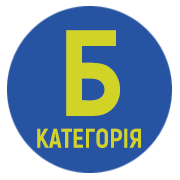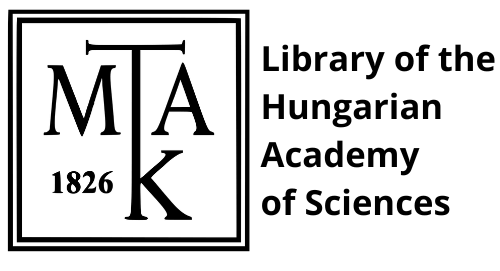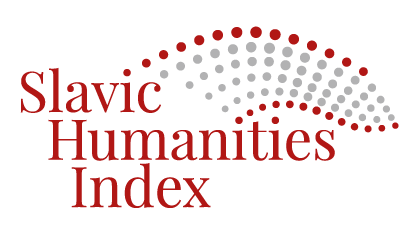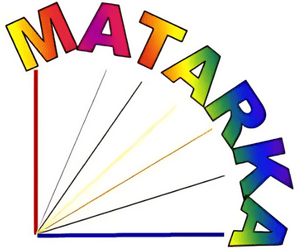How can a diachronic analysis of the linguistic landscape be used in dialectology (on the example of the Transcarpathian region)?
DOI:
https://doi.org/10.58423/2786-6726/2023-1-126-138Keywords:
linguistic landscape, diachronic analysis, dialect, Ukrainian language, TranscarpathiaAbstract
This article was written as part of a diachronic analysis of the linguistic landscape of the Transcarpathian region (Zakarpattia oblast) in Ukraine. The diachronic approach is no longer a new method in this field of research, but for the first time, it is used here specifically for dialectological purposes. The main goal of this paper is to prove that works on the study of the linguistic landscape can be useful in a much wider range of linguistic (and not only) disciplines, and dialectology in particular. For this, two types of data were analyzed. The first type includes dictionaries and written documents in the local version of the Ukrainian language from different historical periods, starting with the 16th century and ending with independent Ukraine. The second one includes street signs of modern Transcarpathian cities where the dialect is used. By combining these two types of data, it is possible to analyze: 1) since when the dialectal elements that we have now on the streets begin to be recorded in historical materials; 2) which dialectal elements have survived to this day and continue to be actively used by the local population. It is important because the existence of local words on street signs itself automatically indicates their real use in the Transcarpathian region. No person or private enterprise will write something incomprehensible to the locals, because their profit depends on it. That is why the linguistic landscape of modern streets makes it possible to conduct the most objective analysis of the dialectal elements of Transcarpathia, and the diachronic approach allows us to support this material with data from historical documents. In addition, we will explain why such inscriptions appear more often on Transcarpathian streets and how this is related to the phenomenon of language commodification, that is, the process of turning a language (or, in our case, a dialect) into a commodity. We will also consider interesting examples and explain the difference between directly foreign words and transliterated Transcarpathian dialectal elements that were borrowed from Hungarian or other languages. The text is accompanied by photographs taken by the author of this article during trips to Transcarpathia in 2019-2021.
References
Beley, Les’ 2012. Movnyy landshaft Zakarpats’koyi oblasti Ukrayiny pochatku XXI st. [Linguistic landscape of the Transcarpathian region of Ukraine at the beginning of the XXI century]. Dysertatsiya kand. filol. nauk: Nats. akad. nauk Ukrayiny, In-t movoznavstva im. O. O. Potebni NAN Ukrayiny (In Ukrainian).
Berehsasi, Aniko – Chernychko, Stepan 2020. Hroshi ta (movna) polityka. Vizual’na konstruktsiya movnoyi polityky na banknotakh na terytoriyi suchasnoho Zakarpattya [Money and (language) politics. Visual construction of language policy on banknotes in the territory of modern Transcarpathia]. Termini Egyesület, Törökbálint (In Ukrainian).
Verkhrats’kyy, Ivan 1899. Znadoby do piznannya uhors’ko-rus’kykh hovoriv. Ch. I: Hovory z naholosom dvyzhymym [Needs for learning Hungarian-Russian dialects. Part I: Dialects with a moving accent]. L’viv (In Ukrainian).
Verkhrats’kyy, Ivan 1901. Znadoby do piznannya uhors’ko-rus’kykh hovoriv. Ch. II: Hovory z naholosom stalym [Needs for learning Hungarian-Russian dialects. Part II: Dialects with a steady accent]. L’viv (In Ukrainian).
Hiresh-Laslov, Korneliya 2015. Rol’ movy u vynyknenni etnichnykh kordoniv u misti Berehovo [The role of language in the emergence of ethnic boundaries in the city of Berehovo]. Filolohichnyy chasopys [Philological journal] 1, s. 13-20 (In Ukrainian).
Hiresh-Laslov, Korneliya – Chernychko, Stepan 2018. Movna polityka u fotohrafiyakh: Vid Avstro-uhors’koyi Monarkhiyi do rozpadu SRSR. Zakarpattya [Language policy in photographs: From the Austro-Hungarian Monarchy to the collapse of the USSR. Transcarpathia]. Berehovo: Zakarpats’kyy uhors’kyy instytut im. Ferentsa Rakotsi II, Naukovo-doslidnyy tsentr im. Antoniya Hodynky (In Ukrainian).
Hnatyuk, Volodymyr 1898. Etnografichni materyyaly z Uhors’koyi Rusy. T. II: kazky, bayky, opovidanya pro istorychni osoby, anekdoty [Ethnographic materials from Hungarian Rus'. Volume II: fairy tales, fables, stories about historical figures, anecdotes]. L’viv (In Ukrainian).
Hnatyuk, Volodymyr 1909. Etnografichni materyyaly z Uhors’koyi Rusy. T. IV: kazky, lyegendy, novelyi, istorychni spomyny z Banatu [Ethnographic materials from Hungarian Rus'. Volume IV: fairy tales, legends, short stories, historical memories from Banat]. L’viv (In Ukrainian).
Hodynka, Antoniy 1922. Rusyns’ko-madyars’kyy slovar’ hlaholuv [Rusyn-Hungarian dictionary of verbs]. Uzhhorod (In Ukrainian).
Dzendzelivs’kyy, Yosyp 1966. Izohlosy uhors’kykh leksychnykh nasharuvan’ v ukrayins’kykh hovorakh Zakarpats’koyi oblasti URSR [Isoglosses of Hungarian lexical layers in the Ukrainian dialects of the Transcarpathian region of the Ukrainian SSR]. Ukrayins’ka linhvistychna heohrafiya [Ukrainian linguistic geography], s. 45-75 (In Ukrainian).
Dezhe, Laslo 1985. Ukrainskaya leksika ser. XVI veka: Nyagovskiye Poucheniya (slovar’ i analiz) [Ukrainian vocabulary of the middle of the 16th century: Nyagovsky Teachings (dictionary and analysis)]. Debrecen (In Russian).
Dezhe, Laslo 1996. Delovaya pis’mennost’ rusinov v XVII-XVIII vekakh. Slovar’, analiz, teksty [Rusyn business writing in the 17th-18th centuries. Dictionary, analysis, texts]. Nyíregyháza (In Russian).
Kapral’, Mykhayl 2017. Rusyns’kyy ortografichnyy slovar’ (z gramatychnyma tablamy) [Ruthenian orthographic dictionary (with grammar tables)]. Budapest: Örökségünk Könyvkiadó Kft (In Ukrainian).
Lizanets, Petr 1976. Vengersko-ukrainskiye mezhyazykovyye svyazi. Vengerskiye zaimstvovaniya v ukrainskikh govorakh Zakarpat’ya [Hungarian-Ukrainian interlingual relations. Hungarian borrowings in Ukrainian dialects of Transcarpathia]. Budapest: Akadémiai Kiadó (In Russian).
Lyzanets’, Petro 1976. Atlas leksychnykh madyaryzmiv ta yikh vidpovidnykiv v ukrayins’kykh hovorakh Zakarpats’koyi oblasti URSR. Ch. III [Atlas of lexical Ungarisms and their counterparts in the Ukrainian dialects of the Transcarpathian region of the Ukrainian SSR. Part III]. Uzhhorod (In Ukrainian).
Mokan’, Shandor 1977. Leksicheskiye ungarizmy v maramoroshskikh ukrainskikh govorakh [Lexical Ungarisms in Maramorosh Ukrainian Dialects]. Voprosy finno-ugorskoy filologii [Issues of Finno-Ugric Philology] 3, s. 100-124 (In Russian).
Pavlenko, Aneta 2017. Yazykovyye landshafty i drugiye sotsiolingvisticheskiye metody issledovaniya russkogo yazyka za rubezhom [Linguistic landscapes and other sociolinguistic methods of studying the Russian language abroad]. Vestnik Rossiyskogo universiteta druzhby narodov. Seriya: Lingvistika [Bulletin of the Peoples' Friendship University of Russia. Series: Linguistics], 21(3), s. 493—514 (In Russian).
Paladi, Angela 2014. Yazyki mezhetnicheskoy kommunikatsii v zakarpatskom Solotvine v XX-om veke: vengerskiy, russkiy, ukrainskiy? [Languages of interethnic communication in Transcarpathian Solotvyno in the 20th century: Hungarian, Russian, Ukrainian?]. In: Baran’ Yelyzaveta, Chernychko Stepan. Ukrayins’ko-uhors’ki mizhmovni kontakty: mynule i suchasnist’ [Ukrainian-Hungarian interlanguage contacts: past and present]. Uzhhorod: Vydavnytstvo V. Padyaka, s. 227-245 (In Russian).
Pilipenko, Gleb 2014. Vtoroyazychnaya rech’ zakarpatskikh vengrov: sotsiolingvisticheskiy i strukturnyy aspect [The Second Language Speech of the Transcarpathian Hungarians: Sociolinguistic and Structural Aspects]. In: Baran’ Yelyzaveta, Chernychko Stepan. Ukrayins’ko-uhors’ki mizhmovni kontakty: mynule i suchasnist’ [Ukrainian-Hungarian interlanguage contacts: past and present]. Uzhhorod: Vydavnytstvo V. Padyaka, s. 246-265 (In Russian).
Chernychko, Stepan 2014. Movna polityka i movnyy landshaft suchasnoho Zakarpattya v istorychnomu plani (1900-1944 rr.) [Language policy and linguistic landscape of modern Transcarpathia in historical terms (1900-1944)]. In: Baran’ Yelyzaveta, Chernychko Stepan. Ukrayins’ko-uhors’ki mizhmovni kontakty: mynule i suchasnist’ [Ukrainian-Hungarian interlanguage contacts: past and present]. Uzhhorod: Vydavnytstvo V. Padyaka, s. 48-66 (In Ukrainian).
Chernychko, Stepan 2019. Rol’ hromads’kykh aktyvistiv u formuvanni movnoho landshaftu ta movnoyi polityky [The role of public activists in shaping the linguistic landscape and language policy]. In: Csernicskó István, Márku Anita. A nyelvészet műhelyeiből. Tanulmányok a Hodinka Antal Nyelvészeti Kutatóközpont kutatásaiból V [From the linguistics workshops. Studies from the researches of the Antal Hodinka Linguistic Research Center V]. Ungvár: Autdor-Shark, s. 125-134 (In Ukrainian).
Chopey, Laslov 1883. Rus’ko-madyars’kyy slovar’ [Rusyn-Hungarian dictionary]. Budapesht (In Ukrainian).
Bonkáló, Sándor 1910. A rahói kisorosz nyelvjárás leíró hangtana [Descriptive phonetics of the Little Russian dialect of Rakhiv]. Gyöngyös (In Hungarian).
Bonkáló, Alexander 1921. Die ungarländischen Ruthenen [The Hungarian Ruthenians]. Berlin und Leipzig (In German).
Csernicskó, István – Beregszászi, Anikó 2019. Different states, same practices: visual construction of language policy on banknotes in the territory of present-day Transcarpathia. Language Policy, 18(2), 269-293.
Csopey, László 1881. Magyar szók a rutén nyelvben [Hungarian words in the Ruthenian language]. Nyelvtudományi Közlemények XVI [Linguistics Bulletins XVI], 270-294 (In Hungarian).
Hires-László, Kornélia 2019. Linguistic landscapes in a Western Ukrainian town. Corvinus Journal of Sociology and Social Policy, 10(1), 87-111.
Karmacsi, Zoltán 2019. Linguistic Landscape of Transcarpathia’s Tourism. In: Csernicskó István, Márku Anita. A nyelvészet műhelyeiből. Tanulmányok a Hodinka Antal Nyelvészeti Kutatóközpont kutatásaiból V [From the linguistics workshops. Studies from the researches of the Antal Hodinka Linguistic Research Center V]. Ungvár: Autdor-Shark, 101-124.
Landry, Rodrigue – Bourhis, Richard Y. 1997. Linguistic landscape and ethnolinguistic vitality: an empirical study. Journal of Language and Social Psychology, 16(1), 23–49.
Máthé, Kálmán – Volossynovich, Dezső 1940. Magyar-ruszin nyelvkönyv és kisszótár [Hungarian-Rusyn language book and small dictionary]. Budapest (In Hungarian).
Pavlenko, Aneta 2010. Linguistic landscape of Kyiv, Ukraine: A diachronic study. In: Shohamy, E. et al. (Eds.) Linguistic landscape in the city. Bristol, UK: Multilingual Matters, 133-150.
URL1: https://shorturl.at/wyRU0 (Accessed: 17-04-2023).
Downloads
Published
How to Cite
Issue
Section
License
Authors retain copyright and grant the journal the right of first publication. The work is simultaneously licensed under a Creative Commons Attribution 4.0 International License (CC BY 4.0), which permits others to share the work with appropriate credit given to the author(s) and the initial publication in this journal.

















